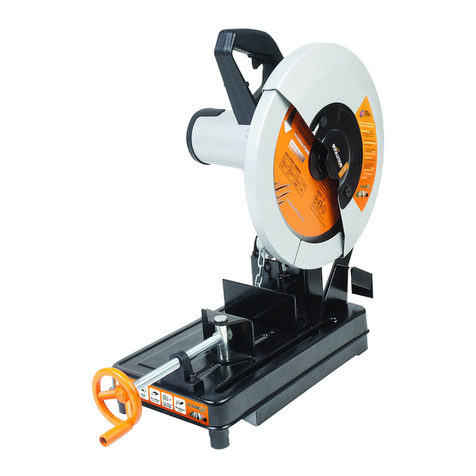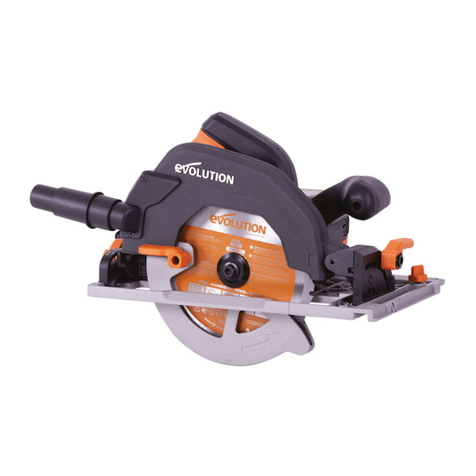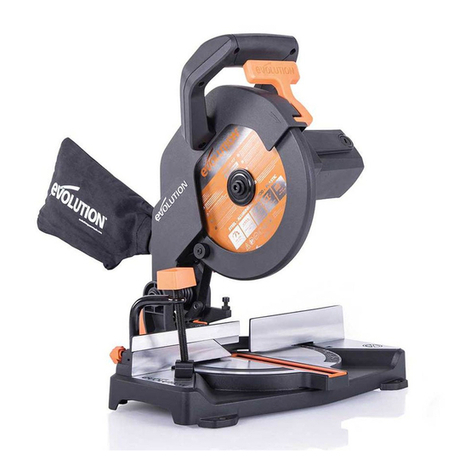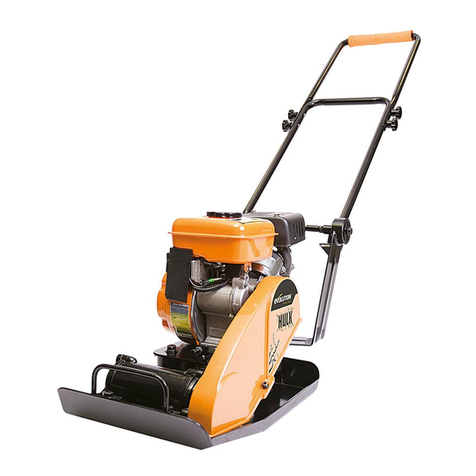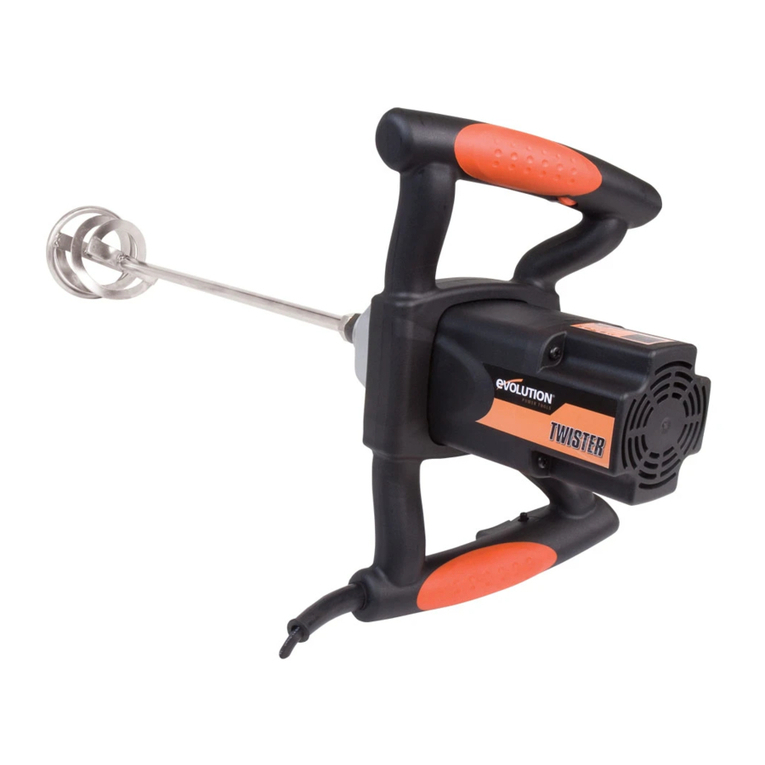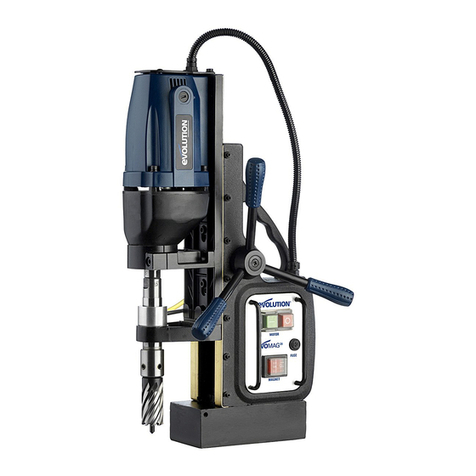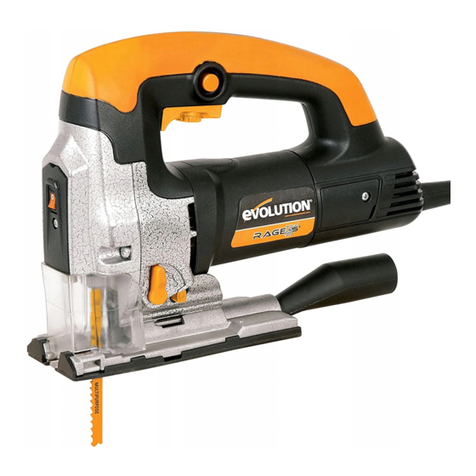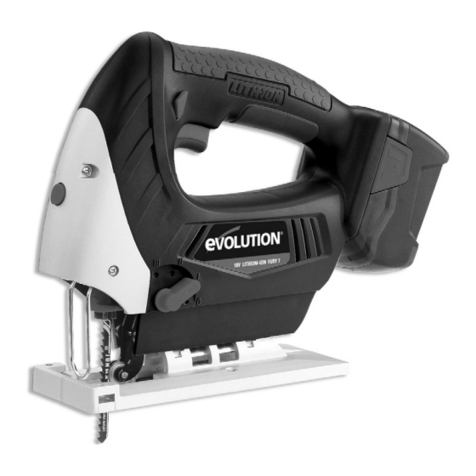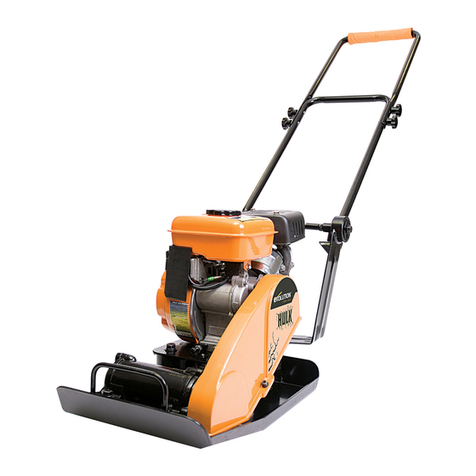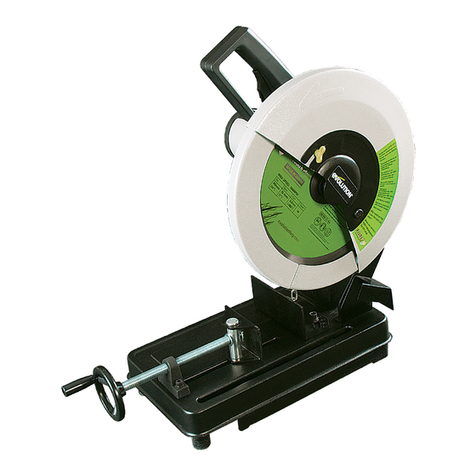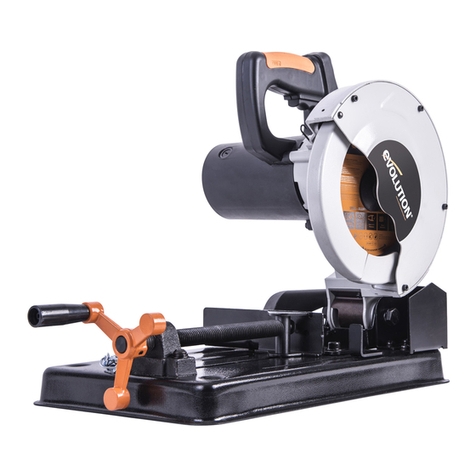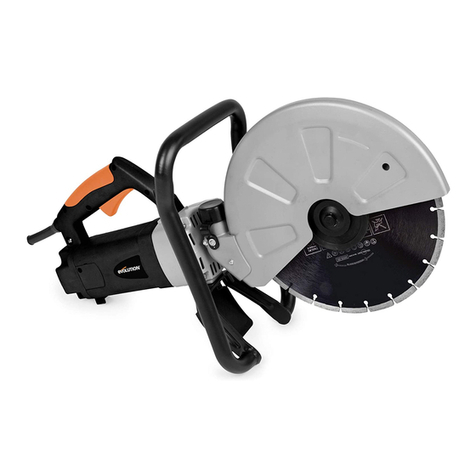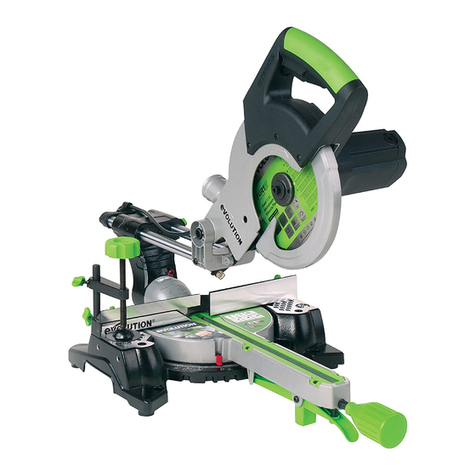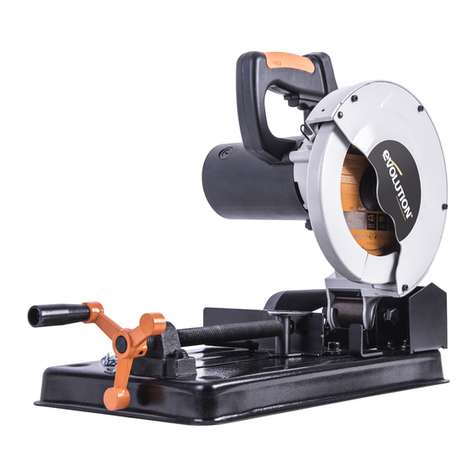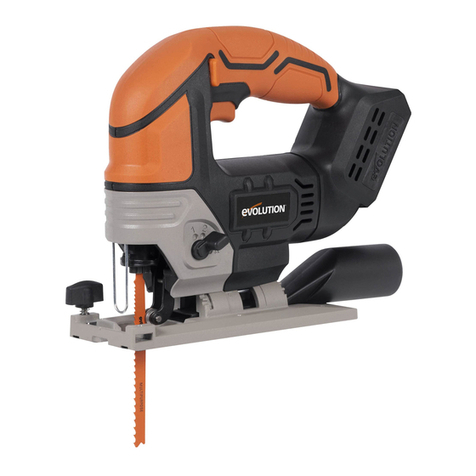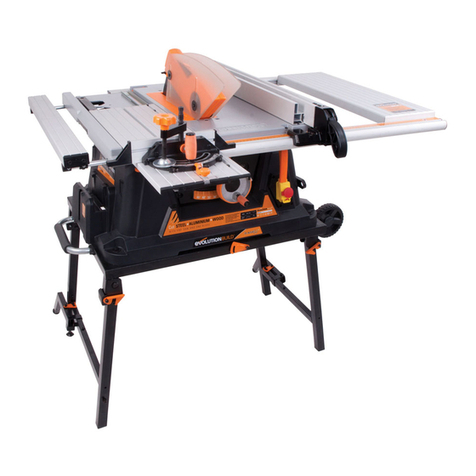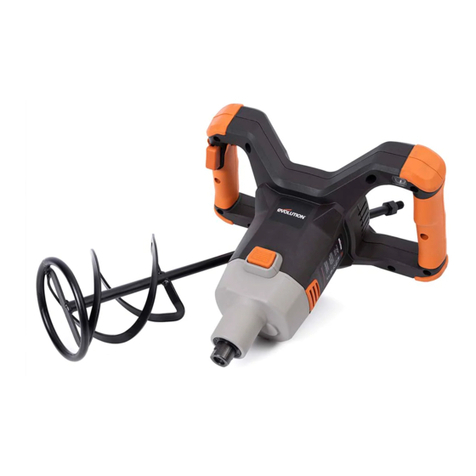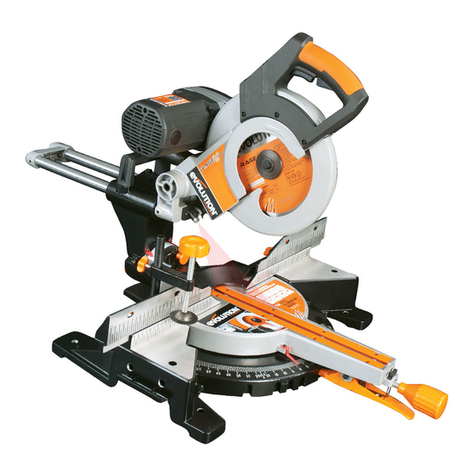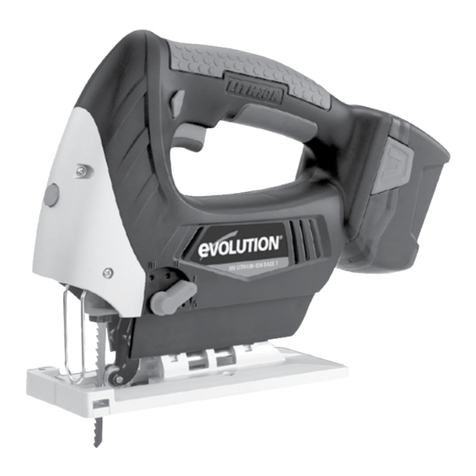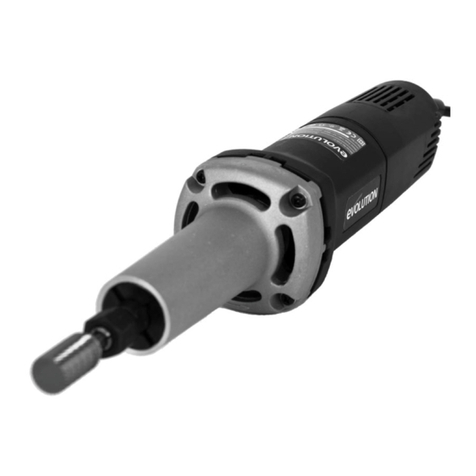WARNING! Read and understand all
instructions before operating this product.
Failure to follow all instructions listed
below, may result in electric shock, fire and
/ or serious personal injury. For your own
safety, read instruction manual before
operating heat gun.
1) WORK AREA SAFETY
a) Keep work area clean and well lit. Cluttered or dark
areas invite accidents.
b) Do not operate power tools in explosive atmospheres,
such as in the presence of flammable liquids, gases or
dust. Power tools create sparks which may ignite the
dust or fumes.
c) Keep children and bystanders away while operating a
power tool. Distractions can cause you to lose control.
2) ELECTRICAL SAFETY
a) Power tool plugs must match the outlet. Never modify
the plug in any way. Do not use any adapter plugs with
earthed (grounded) power tools. Unmodified plugs and
matching outlets will reduce risk of electric shock.
b) Avoid body contact with earthed or grounded surfaces,
such as pipes, radiators, ranges and refrigerators. There
is an increased risk of electric shock if your body is
earthed or grounded.
c) Do not expose power tools to rain or wet conditions.
Water entering a power tool will increase the risk of
electric shock.
d) Do not abuse the cord. Never use the cord for carrying,
pulling or unplugging the power tool. Keep cord away
from heat, oil, sharp edges or moving parts. Damaged or
entangled cords increase the risk of electric shock.
e) When operating a power tool outdoors, use an
extension cord suitable for outdoor use. Use of a cord
suitable for outdoor use reduces the risk of electric
shock.
f) If operating a power tool in a damp location is
unavoidable, use a residual current device (RCD)
protected supply. Use of an RCD reduces the risk of
electric shock.
3) PERSONAL SAFETY
a) Stay alert, watch what you are doing and use common
sense when operating a power tool. Do not use a power
tool while you are tired or under the influence of drugs,
alcohol or medication. A moment of inattention while
operating power tools may result in serious personal
injury.
b) Use personal protective equipment. Always wear eye
protection. Protective equipment such as dust mask, non-
skid safety shoes, hard hat, or hearing protection used
for appropriate conditions will reduce personal injuries.
c) Prevent unintentional starting. Ensure the switch is in
the off-position before connecting to power source and/
or battery pack, picking up or carrying the tool. Carrying
power tools with your finger on the switch or energising
power tools that have the switch on invites accidents.
d) Remove any adjusting key or wrench before turning
the power tool on. A wrench or a key left attached to a
rotating part of the power tool may result in personal
injury.
e) Do not overreach. Keep proper footing and balance at
all times. This enables better control of the power tool in
unexpected situations.
f) Dress properly. Do not wear loose clothing or jewellery.
Keep your hair, clothing and gloves away from moving
parts. Loose clothes, jewellery or long hair can be caught
in moving parts.
g) If devices are provided for the connection of dust
extraction and collection facilities, ensure these are
connected and properly used. Use of dust collection can
reduce dust-related hazards.
4) POWER TOOL USE AND CARE
a) Do not force the power tool. Use the correct power
tool for your application. The correct power tool will
do the job better and safer at the rate for which it was
designed.
b) Do not use the power tool if the switch does not turn it
on and off. Any power tool that cannot be controlled with
the switch is dangerous and must be repaired.
c) Disconnect the plug from the power source and/or
the battery pack from the power tool before making any
adjustments, changing accessories, or storing power
tools. Such preventive safety measures reduce the risk of
starting the power tool accidentally.
d) Store idle power tools out of the reach of children and
do not allow persons unfamiliar with the power tool or
these instructions to operate the power tool. Power tools
are dangerous in the hands of untrained users.
e) Maintain power tools. Check for misalignment or
binding of moving parts, breakage of parts and any other
condition that may affect the power tool’s operation. If
damaged, have the power tool repaired before use. Many
accidents are caused by poorly maintained power tools.
f) Keep cutting tools sharp and clean. Properly maintained
cutting tools with sharp cutting edges are less likely to
bind and are easier to control.
g) Use the power tool, accessories and tool bits etc. in
accordance with these instructions, taking into account
the working conditions and the work to be performed.
Use of the power tool for operations different from those
intended could result in a hazardous situation.
5) SERVICE
a) Have your tool repaired by a qualified person. This
electric tool complies with the relevant safety rules.
Repairs should only be carried out by qualified persons
using original spare parts, otherwise this may result in
considerable danger to the user.
b) When servicing a tool, use only genuine Evolution
replacement parts. Follow instructions in the Maintenance
section of this manual. Use of unauthorized parts or
failure to follow Maintenance Instructions may create a
risk of electric shock or injury.
ADDITIONAL SAFETY INSTRUCTIONS FOR HEAT GUNS
GENERAL
• Donotplaceyourhandovertheairventsorblockthe
vents in any way.
• The nozzle and accessories of this tool become
extremely hot during use. Let these parts cool down
before touching.
• Alwaysswitchthetoolunattendedwhileitisswitched
on.
• Aremayariseiftheapplianceisnotusedwithcare.
• Heatmaybeconductedtocombustiblematerialsthat
are out of sight. Do not use in a damp atmosphere, where
flammable gases may be present or near combustible
materials.
• Allowthetooltocoolfullybeforestoring.
• Ensure adequate ventilation as toxic fumes may be
produced.
• Donotuseasahairdryer.
• Do not obstruct either the air intake or nozzle outlet,
as this may cause excessive heat build up resulting in
damage to the tool.
• Donotdirectthehotairblastatotherpeople.
• Donottouchthemetal nozzle asitbecomesveryhot
during use and remains hot for up to 30 minutes after
use.
• Donotplacethenozzleagainstanythingwhileusingor
immediately after use.
• Donotpokeanythingdownthenozzleasitcouldgive
you an electric shock. Do not look down the nozzle while
the unit is working because of the high temperatures
produced.
• Donnotallowpainttoadheretothenozzleorscraper
as it could ignite after some time.
• Do not use this tool to remove paint containing lead. The
peelings, residue and vapours of paint my contain lead,
which is poisonous. Any pre-1960 building may have been
painted in the past with paint containing lead and covered
with additional layers of paint. Once deposited on surfaces,
hand to mouth contact can result in the ingestion of lead.
Exposure even to low level of lead can cause irreversible
damage to the brain and nervous system. Young and unborn
children are particularly vulnerable.
• When removing paint. Use the scraper provided and keep
the nozzle at least 25mm away from the painted surface.
When working in a vertical direction, work downwards to
prevent paint from falling into the tool and burning.
• Dispose of all paint debris safely and ensure that the work
area is thoroughly cleaned after completing the work.
The package contains:
1 Heat Gun
1 Set of accessories
1 Instruction manual
• Check for damage to the tool, parts or accessories which
may have occurred during transport.
• Take the time to thoroughly read and understand this
manual prior to operation.
Your Evolution HDG200 Heatgun has been designed for
stripping paint, soldering pipes, shrinking PVC, welding
and bending plastics as well as general drying and thawing
purposes.
1. On/off switch
2. Air vents
3. Air temperature adjustment system and display
4. Speed control button
5. Nozzle
www.evolutionbuild.com 5
www.evolutionbuild.com
4
HDG200 HEAT GUN
GENERAL SAFETY RULES GB REMOVING PAINT GB
PACKAGE CONTENTS GB
DESCRIPTION (FIG. 1) GB
